- a long gap of time
- not the exact words of Jesus
- authors don’t cite their sources
- game of telephone
- evolutionary myth
- traditions aren’t always accurate
- conflicting traditions
- bad memory
- distortions
- invented ideas
- mythologized
- living eyewitnesses
- Jesus was a public teacher
- Gospel is too important
- disciples practiced what Jesus taught
- possibility of written notes
- early materials (creed and hymns)
- preserving difficult teachings
- collective memory
- consistency
- rituals & practice
- proximity of the dates
- internal corroboration
- Jewish oral traditions are reliable
Brief history
The Gospel formation went into three big stages (CCC 126):
Jesus’ ministry
(30-33 CE)
Apostle’s preaching
(33-66 CE)
Writing of the Gospels
(66-100 CE)
Between Jesus and the Gospel of Mark (1st Gospel), it’s a gap of forty years. And worst, it was transmitted orally from people to other people.
After seeing Jesus alive in the flesh, the early Christians strongly believed that the end of the world would be eminent, that Jesus would return within their own generation to judge the living and the death. Such high expectations didn’t encourage the Christians to preserve a written biography of Jesus, since there will be no one left to read them.
Why oral traditions?
Christianity started with the belief that Jesus rose from the dead and will ‘return soon’. The urge for worldly repentance and the need to proclaim a risen Lord would be needed to reach as many people as possible. In a 1st century Jewish culture, when most people were illiterate, it was more efficient to spread the good news orally. The first Christians were Jews, and would preach in synagogues, where the audience would already knew the Old Testament.
The printing press didn’t exist at that time, as well as the written form of the Gospels in the early Church from the 30s to 60s CE. Since the population was illiterate, the best way to reach people to know Jesus was to attend the Sunday meetings or to meet a missionary in the street.
Since the first Christians believed that Jesus will return during their lifetime, they don’t bother keeping a written record of his life, since there will be no one left to read them.
With a highly illiterate population, the best way to reach a wider number of people was to transmit the message orally, especially during Sunday meetings. Since they expected Jesus to return soon (during their lifetime), they don’t felt the need to write down. As the 1st generation of Christians were dying out, the life of Jesus had to be recorded on paper. From the 2nd century CE (when the four Gospels were already produced and started to be copied), it was expected for them to be read out loud for people to hear.
No written Gospels were available in the early Church, not until 65 CE. The majority had no other choice than to spread the message orally1. People didn’t have the Internet, so most of what they could have known about Jesus was given through the weekly Sunday meetings, lead by an Apostle or trained disciples. Or else, when a Christian preaches publicly in the cities.
Oral transmission could reach a much greater number of people in the beginning, due to it current circumstances.
- paper was expansive
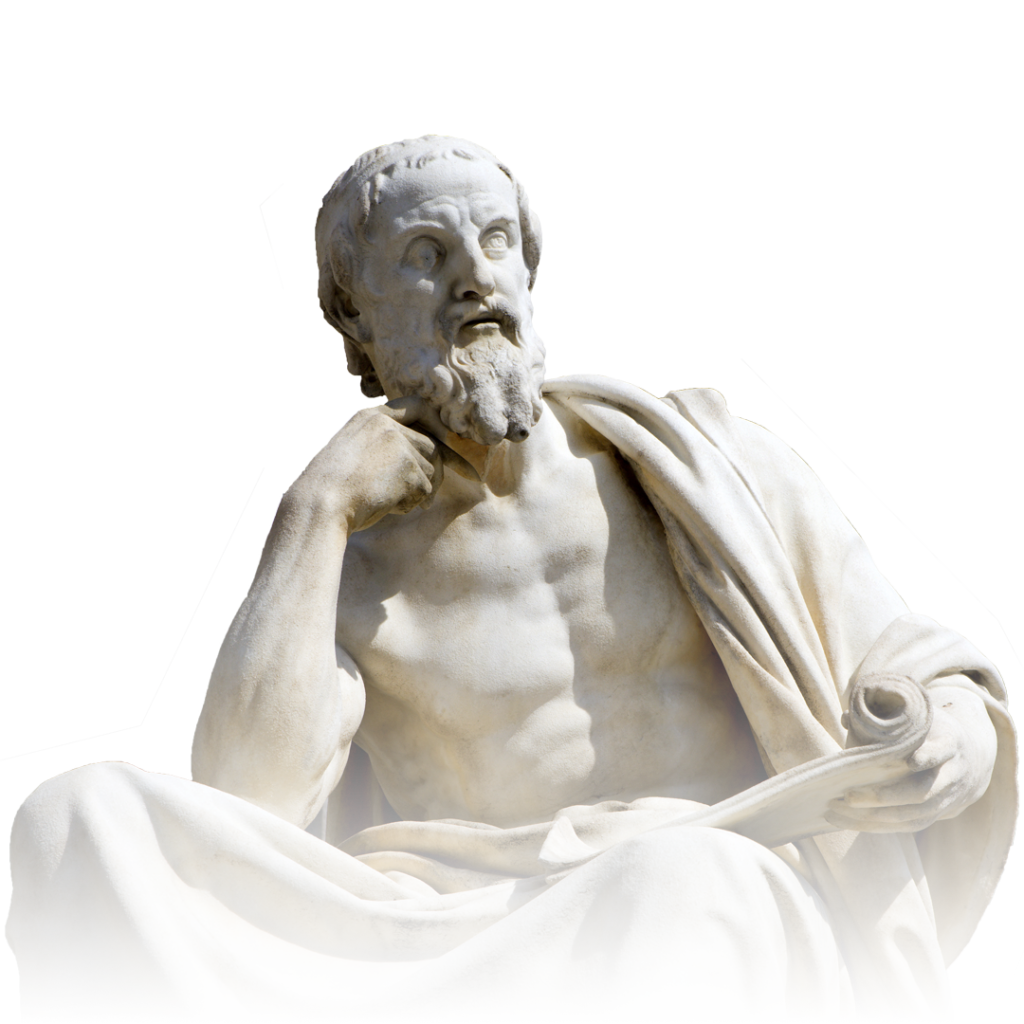
- Xenophon
- Dionysius of Halicarnassus
- Plutarch
- Arrian
- Cornelius Nepos
- Tacitus
- Herodotus
- Philostratus
01. The recording of Jesus’ ministry
Eyewitness
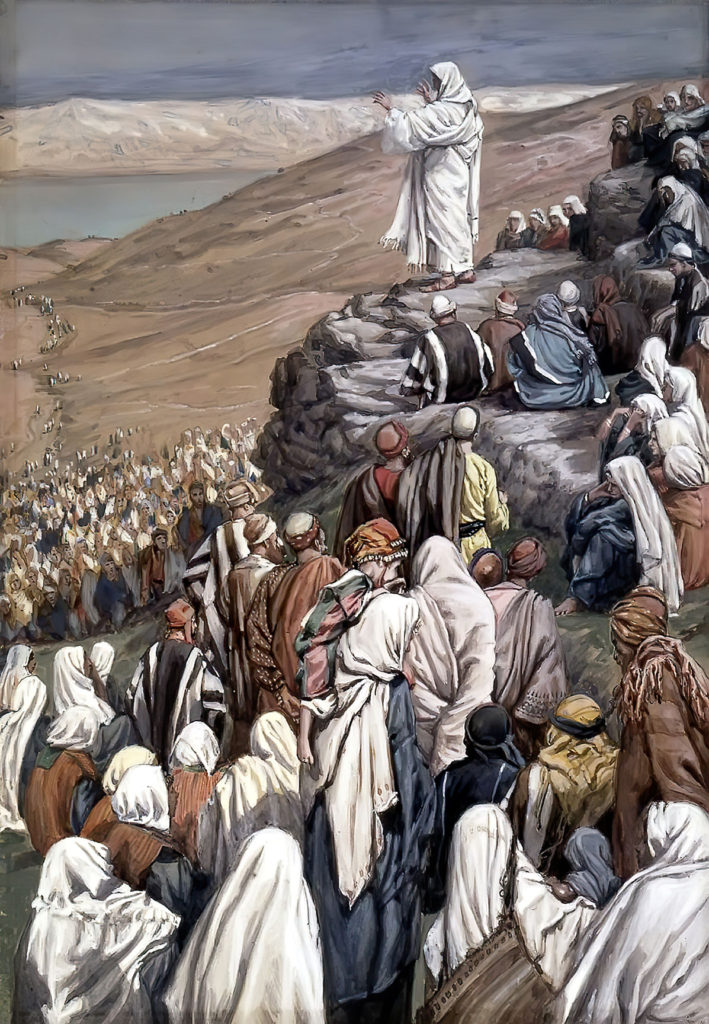
Robert McIver gives us statistics of potential adult (15+) who could have been eyewitness of Jesus’ ministry6:
- 30s
(Jesus’ ministry): 63K (Olympic stadium) - 60s
(Mark’s Gospel): 20k (hockey stadium) - 90s
(John’s Gospel): 600 – 1,100 (big church)
Of course, these people aren’t necessarily baptized Christians. But, it would be fair to say that the four Gospels can be based on eyewitness testimonies.
As former detective J. Warner Wallace would say: if all the four accounts have different perspectives of the life of Jesus, it is most likely because they are unique details that would be only known and reported by eyewitnesses7.
Taking notes
In the Dead Sea Scrolls, the Teacher of Righteousness’ instructions appears to be written down during his lifetime11 on wax tablets.
Matthew could have done that when Jesus was preaching12.
Mark took note of Peter’s preaching13. Q could be a written record of Jesus’ sayings (since Matthew & Luke’s content is almost verbatim).
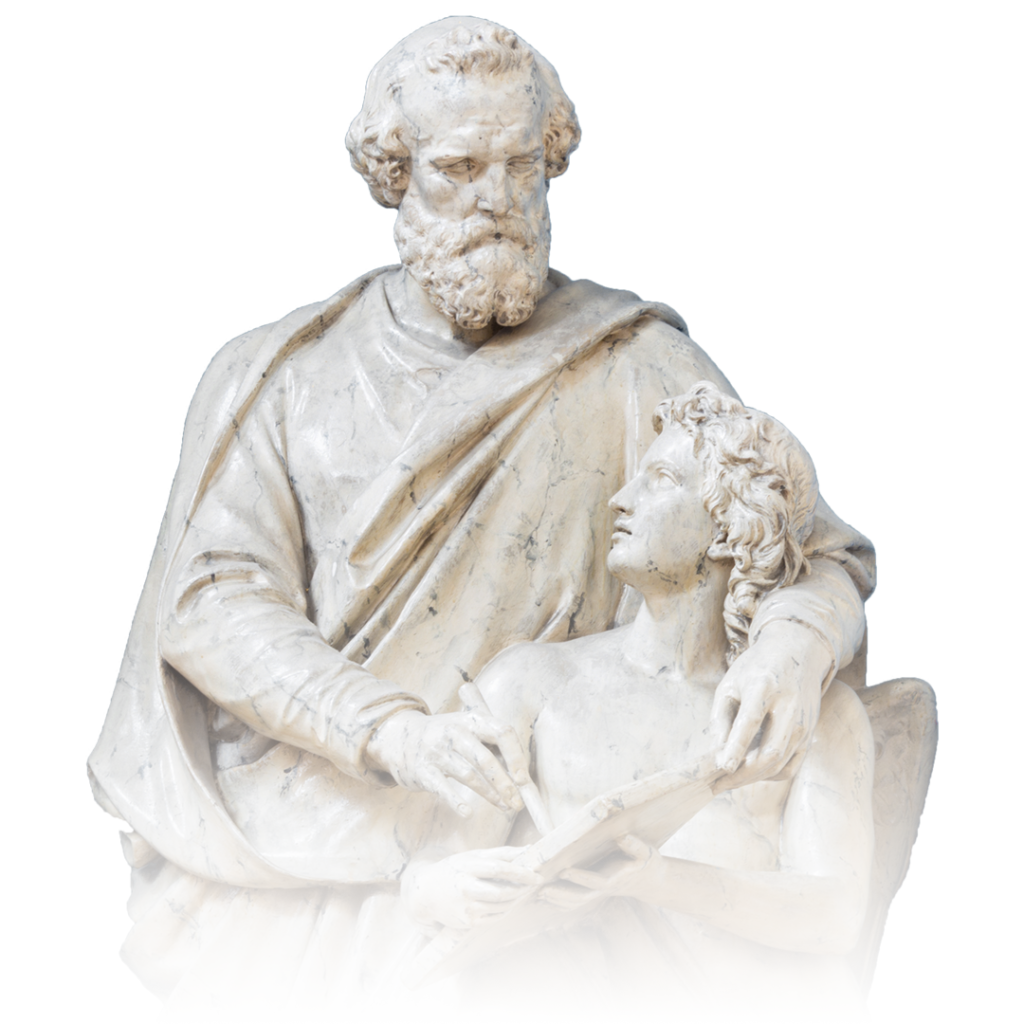
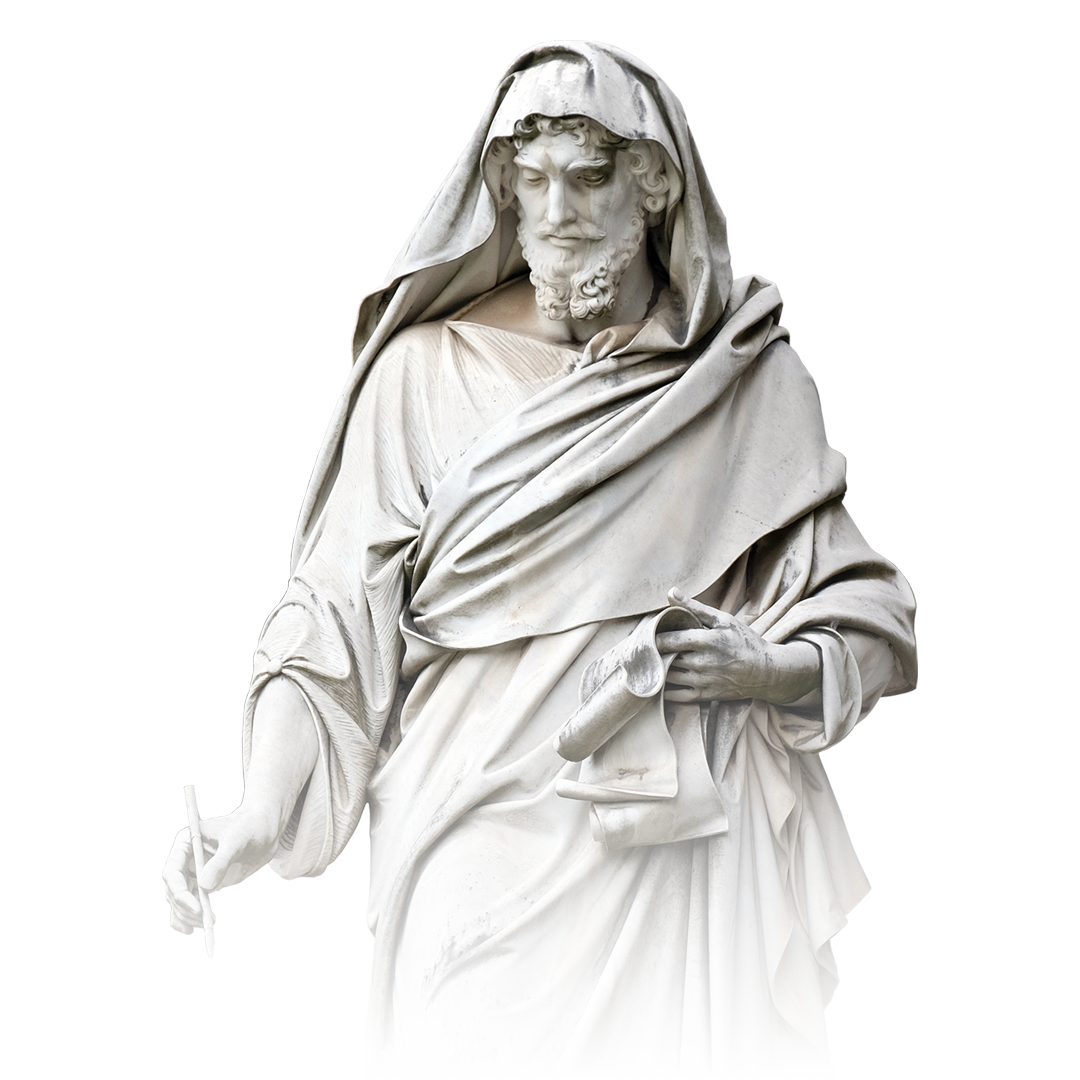
Internal evidence
- Peter & John self-identified as eyewitness & deliver their testimony14
- Paul & the 4 Gospels authors identified who are their witnesses15
(many of them were from the beginning of Jesus’ ministry) - Hebrew affirms eyewitness presences
(Heb 2:3-4) - Peter chose an eyewitness from the beginning of Jesus’ ministry to replace Judas Iscariot
(Acts 1:21-22)
Evidence of eyewitness
Even if the Gospels were written outside of Palestine by authors who weren’t necessarily present when the events happened, some traditions however displays eyewitness presence and early testimonies:
- Semitism (Aramaic words preserved in the Gospels)
- verisimilitude
- ex: accurate descriptions of landmarks before 70 CE (after that it was destroyed)
- the remarkable similarities between the accounts
- post-70 events aren’t mentioned
(ex: the destruction of the Temple, 1st Jewish-Roman war) - switch from past to present tense
(ex: Jn 5:1-6)and pronouns20

If the Gospels aren’t based on eyewitness accounts, how come the authors got the details so right if they wrote it late outside of Palestine?
The memory skills of Jews
The first Christians were devoted Jews who live in an oral culture. Because only less than 10% of the population was literate21, they had to rely heavily on their memory skills to retain a large amount of information. Memories decrease as technology increase.
Childhood
| Work | Number of words | Reading speed (200 wpm) |
| Homer’s Iliad | ~ 218K | ~ 18 h |
| Homer’s Odyssey (shortest) | ~ 173K | ~ 14,4 h |
| Hebrew Scriptures (Old Testament) | ~ 600K | ~ 50 h |
| Gospel of Luke (longest Gospel) | ~ 20K | ~ 1,6 h |
Split the tasks
As a reminder: the Gospels is made of separated units of material, so it is not as if someone has to retain one hour and a half of stories and speeches over a period of forty to sixty years. The job was split among Christians. Luke only re-assembles the traditions to make it a whole narrative (Lk 1:1-4).
Jewish literature
The Sopherim & Zugoth (Hebrew scribes) preserved & copied the Old Testament texts from 5th century BCE to 1st century CE in a very strict way (possibly burning out miscopied versions)26.
This is very clear when we compare our oldest Isaiah scroll with the Dead Sea scrolls(1QIsa): it’s almost identical.
During the tannaitic period (0-200 CE), some rabbis trusted their memory so much that they even banned the writing of oral traditions27.
4 Jewish texts still preserve information coming orally from the 1st century CE:
- The Mishnah
(3th century CE) - Jerusalem Talmud
(5th century CE) - Babylonian Talmud
(6th century CE) - Masoretic vocalization tradition
(6th-10th century CE)
As the Jews revere the Torah as sacred traditions, the first Christians would also have great care to preserve the Word of God the same as it would be pass down from Jesus until the writing of the Gospels.
A. N. Sherwin-White (Oxford) argues that even a span of two generations is not sufficient for a legend to wipe out a solid core of historical facts28.
One example: the rise of docetism (late 1st century CE): if living eyewitnesses were still around, they would have a hard time promoting their idea. Later Gnostic texts (2nd century CE) are filled with legendary embellishments.
All the four Gospels have been composed under a brief period of sixty years of Jesus’ death!
Ultimately, if we can collect stories from WW2 veterans decades after the events, there are good chances that we replicate the same process for the four Gospels.
And if you saw your master performing miracles, expelling demons, being crucified, and resurrect in front of you, it’s not the sort of detail you would easily forget.
As Irenaeus said: the older ones gets, the clearer they remember the past and forget the present years31.
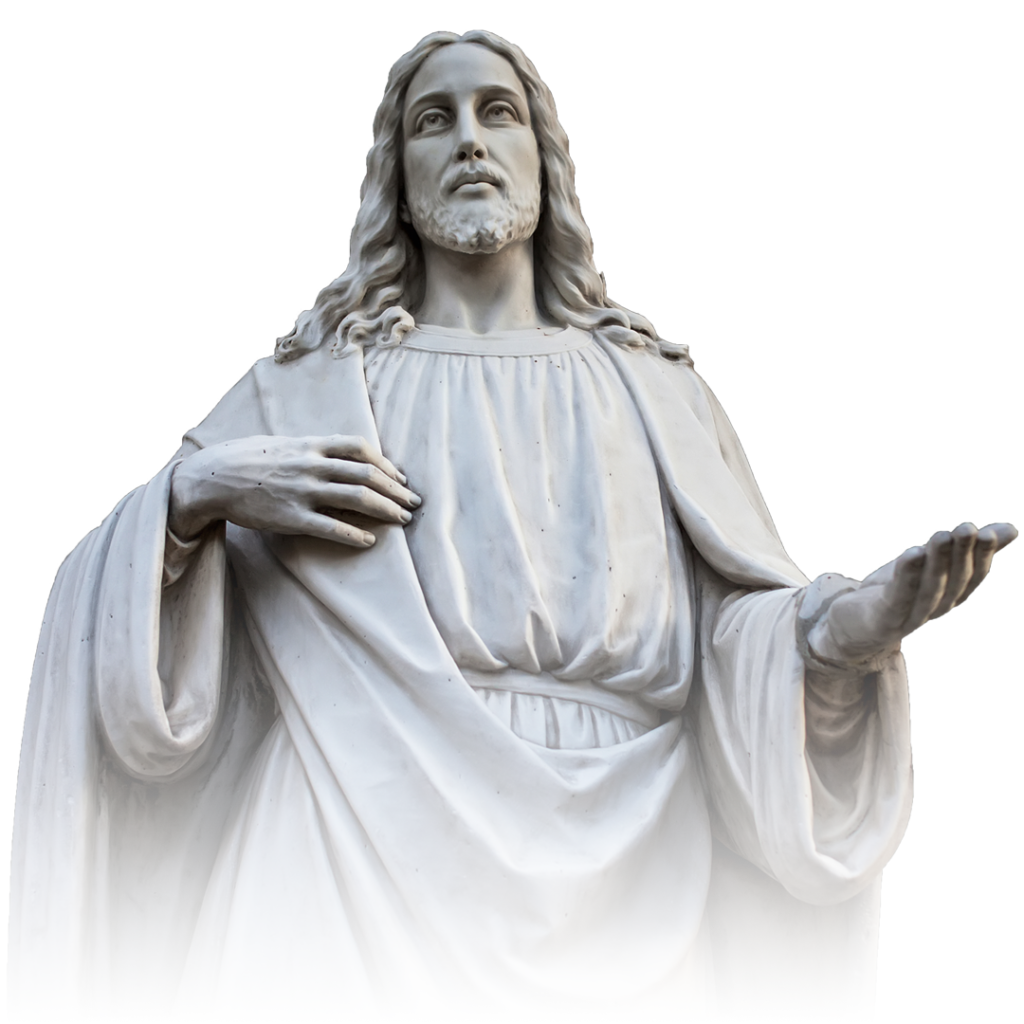
Memorization
To make things easier to remember, 80% of his teaching is cast in poetic form40:
- alliteration
(repetition of same sounds or letters) - paronomasia
(puns, word-play) - assonance
(resemblance of sound) - parallelism
- rhyme
His first audience were devoted Jews who already knew the Old Testament, so it was very easy to make parallels and connections.
Repetitions
02. Apostle’s preaching
Convinced that Jesus was the Messiah, the Apostles continue to spread his teachings throughout the world, mostly during the weekly Sunday gatherings, with an emphasis on the need to repent and be baptized, since the world will “end soon”.
The early preaching
In Judaism, synagogues were places of study for the community53, while the Temple served as a place of sacrifice54. For this reason, Christians infiltrated these 2 places to gain new converts 55. It was much easier to convince an audience who already had the background knowledge of the Old Testament. That sort of practice was continued on by the first Christians when they preach the Word of God and partake of the Eucharist.
The early liturgies
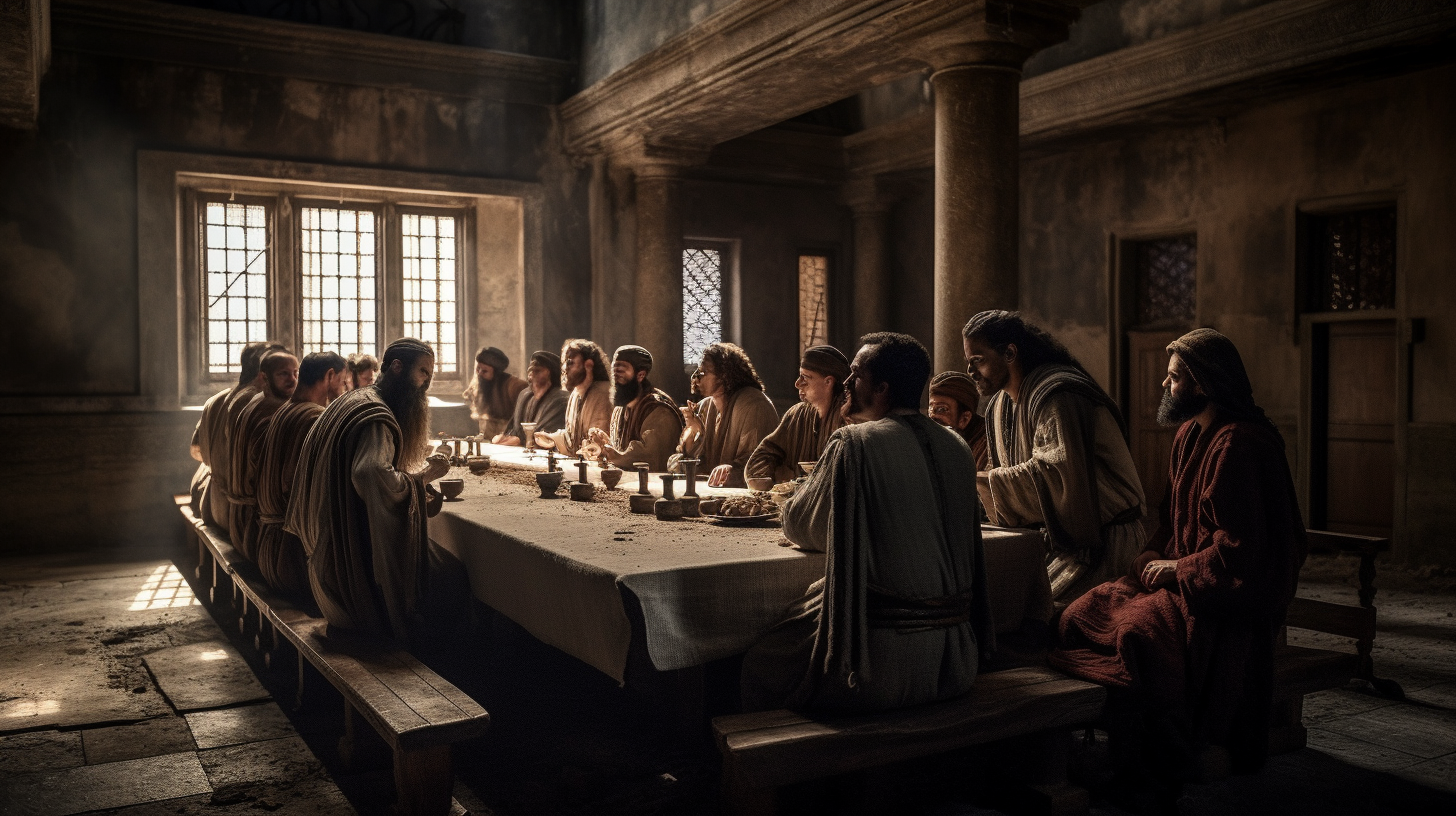
The same way, the first Christians gather weekly to learn from the apostles and partake of the Eucharist (Acts 2:42). That is to say: they keep repeating the same thing over and over again. That was their ‘full-time job’, like any priest today.
People couldn’t know the stories of Jesus like today, with the millions of copies of the Bible circulating on the Internet and libraries. And so did the first Christians too. If an outsider wanted to learn about Jesus, they had to attend the weekly meetings on Sunday, where an Apostle or their companions would teach.
By attending regularly the Sunday meetings, one would be frequently get exposed to the stories and the teachings of Jesus, and at the same time, help the preacher to preserve his own memory by repeating the same thing over and over.
Writing down the Gospels was advantageous:
- keep a record of the traditions
- easily copied
History of the Jesus traditions
The content historically grew in four stages59:
| Content | Record | Period |
| kerygma | 1 Cor 15:3-5, Acts 2:36 | 33-35 CE |
| primitive passion narrative | Mk 14:1-16:8 | 33-37 CE |
| primitive gospel | Mark | 66-70 CE |
| fuller gospels | Matthew, Luke, John | 80-96 CE |
Christianity didn’t start with a ‘historical Jesus’ turned into a ‘Christ of faith’.
The “teaching of Peter” in Acts 10 (37 CE) bears a striking similarity to the biography of Jesus in the Gospel of Mark. It could have been a proto-Gospel.
| Acts 10 | Mark |
| 33-36 | 1:1-15 |
| 37-38 | 1:14-8:30 |
| 39-40 | 8:31-16:8 |
Early Christians were so preoccupied with Jesus’ return that they pay less attention to smaller details. As the hope fades out, people gradually want to know more about Him62.
Kerygma
At this stage, the essence of Christianity is set in stone, starting from the Jerusalem Church. The rest (details) just follow out of it.
The pre-Pauline creeds & hymns are probably constructed on these beliefs. For example, the speech in Acts 2 summarized that Jesus was a man, did miracles, raised from the dead, and is divine. They don’t add more details. As the years go, people developed formulas to be easy to catch and remember.
Passion source
At the same time, if you speak about a crucified Son of God, that was controversial. People would wanted more details about what happened to Jesus for Him to end up that way.
Later forgeries made it clear: apocryphal Gospels wanted to fill the blank with newer ideas.
Gospel of Mark
Even if oral traditions can be reliable, they could also dilute with time.
The Gospel of Mark (AD 66-70) would have been written at a time there the first generation would have been dying out, leaving behind a lot of material to use with when they were preaching the good news.
Gospel of Matthew, Luke & John
Matthew & Luke used Mark as a primary source, and then add more details that were available to them (M, L, Q). John wrote independently, and possibly some units are shared with the Synoptics.
In the same way, Suetonius has developed on the works of Tacitus and Plutarch to talk about Cesar, as more material was available for him to use70.
Oral transmission
Oral traditions was usually associated, not with anonymous communities but with well-known individual authoritative bearer of tradition (Paul, Peter, James, Barnabas, etc)71.
Comparing the oral traditions with the “game of telephone analogy”72 is terrible.
Moreover, their geographical locations were advantageous to control the transmissions (Peter & Paul in Rome & Antioch, James in Jerusalem, John in Ephesus). Paul was also a frequent traveler and corrected mistaken views by sending letters.
“There is no material in Mark which must be dated after AD 70.”76
E.P. Sanders & Margaret Davies
In Qumran, public reading of Scriptures was performed with great care, to the point of permanently expulse any bad reader from the community (1QS 7.1).
So between the 30s to 60s AD, we can be confident that the message was well-preserved in the Roman empire.
Peter’s speeches
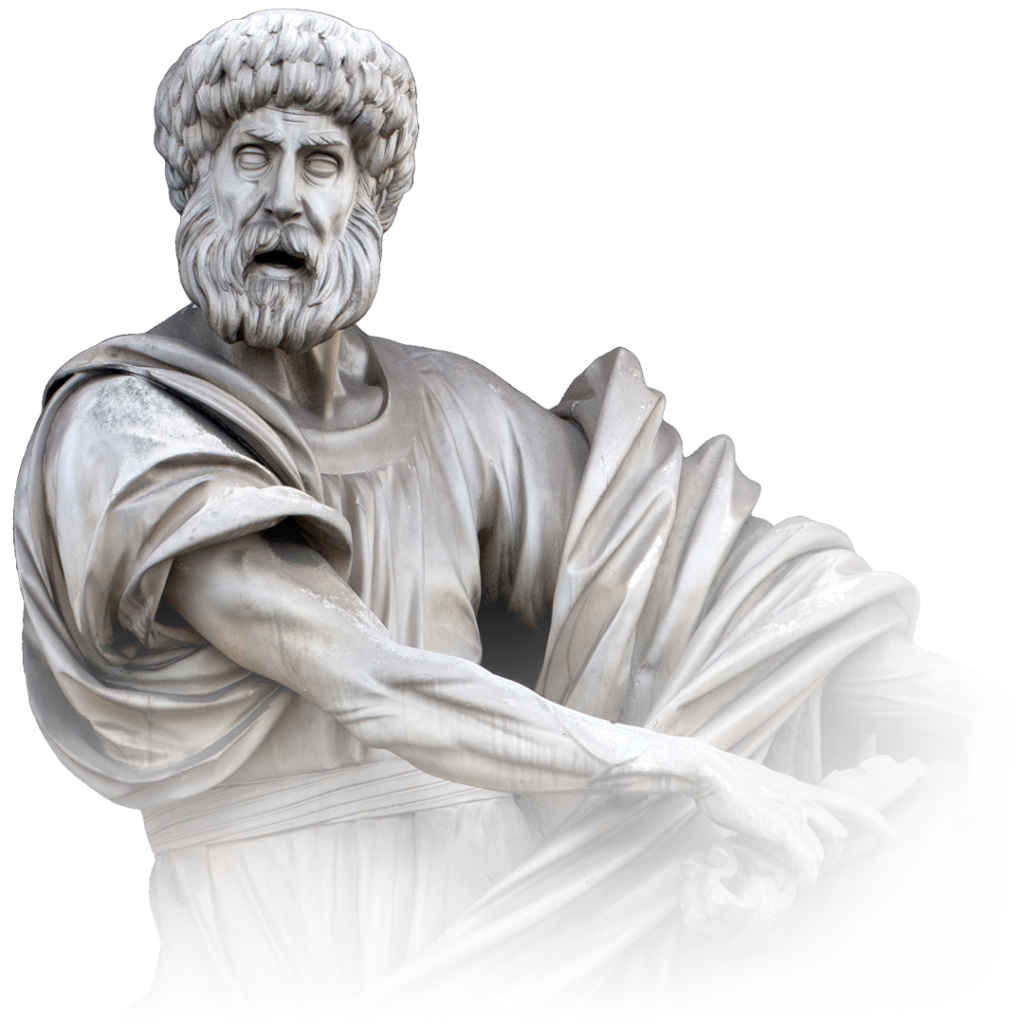
When we don’t repeat, we forget.
Peter repeated himself all the time when he preach (Acts 2:22-40, 3:12-26, 4:8-12, 5:29-32, 10:36-43). Paul repeat the same message (Acts 13:16-41). Thus, they have the entire Gospel in memory, because he say the same thing over and over again. Acts 10:36-43 (ca. 37 AD) could be a “proto-Gospel”, where he summarize the life of Jesus in his speech, later recorded in detail in Mark’s Gospel.
If Matthew & Luke used Mark as a template, we have two reliable accounts of Jesus’ ministry.
03. Writing of the Gospels
A lot of “less essential” traditions weren’t recorded, due to the fact that the Gospel authors were limited in space to fill up an entire scroll. They had to be selective and abbreviate the content77.
Gospel of Mark
Peter was the main source for Mark’s Gospel.
Gospel of Luke
Even if the major biographers (Nepos, Plutarch, Tacitus, Suetonius, Diogenes Laertius) cite their sources directly, Luke doesn’t. That’s because he was writing a recent history. Most ancient authors who composed within the living memory often don’t need to name their sources78.
The Gospel authors make sure that their content is authentic:
- Luke filter the content before making the final version
(Lk 1:1-4) - Jesus’ difficult teachings are preserved instead of being dismissed (no filtering or censorship)
- Paul make the distinction between what Jesus taught and what he taught
(1 Cor 7:10-12) - Mark wanted to leave out nothing of what he heard, or distort it79
- they didn’t correct each other (no polemic), instead, they supplement each other (ex: John reveal anonymous people)
- Paul promised before God that he’s not lying (Gal 1:20)
- Paul avoid corrupting the Gospel at all cost (Gal 2:5, 1 Cor 9:16)
- Paul rebuked false teachers (2 Thess 3:6, 1 Tim 6:20, Col 2:8, Gal 1:9)
- Paul passed on traditions (1 Cor 11:2; 23, 15:1-3, 1 Thess 4:1)
- Luke write accurately what was passed down to him (Lk 1:3)
- Preservation of embarrassing moments
An accurate preservation
Because the Gospel was highly regarded as the sacred word of God80, it was crucial for Christians to preserve the traditions as accurate as they can. They don’t have the freedom to get creative.
And since they are eyewitness reports, we should expect that each people have a different emphasis on what they say, and thus, would explain why the four Gospels aren’t word-for-word the same exact thing.
The fact that they put into practices what Jesus taught would help preserve his teachings.
Decades later, many passages are almost word-for-words, but different enough to not suspect a “copy/paste” between the authors.
| 1 Cor 11:24 (ca. 56 CE) | Lk 22:19 (80s CE) |
| "and, after he had given thanks, broke it and said, ’This is my body that is for you. Do this in remembrance of me.’" | "…said the blessing, broke it, and gave it to them, saying, ’This is my body, which will be given for you; do this in memory of me.’" |
Seyoon Kim found 25 teachings of Jesus in Paul’s letters that paralleled with the 4 Gospels81.
The original wordings of Jesus
The case of Jesus is a bit similar to Socrates: both didn’t leave us a written account, but their teachings were recorded by their own disciples (e.g. Plato’s Dialogue, Xenophon’s Memorabilia and Symposium, Aristophane’s Clouds).
After all, Jesus spoke Aramaic, and the Gospels are written down in Greek. And if Jesus spoke a bit of Greek, some of his speeches in the Gospels could be close to verbatim86.
In comparison with today: students who take notes in class generally don’t copy word-for-word what the teachers say (even with a laptop), but the essence of what is told.

Since Jesus himself was a homeless itinerant preacher, Christians would make sure that what He taught in the Gospels actually reflect His current situation, in the framework of his lifestyle87. Followers of Christ also put themselves into that way of living.
Oral traditions
While the Gospels might differ on small historical details, divinely speaking, the Holy Spirit safeguards the disciple’s memory (Jn 14:26) and prevents any theological error (Jn 16:13) (what is necessary for our salvation).
The disciples didn’t need to memorize the whole story by heart (to the slightest detail) by their own. Instead, since they follow Jesus everywhere all the time, they act as authoritative figures to confirm if a material about Jesus is authentic or not.
That is why we don’t see a virtually word-for-word copy between the Gospels when we compare them. They all get their information from various sources. The memory job is split out.
So the Gospels weren’t made of one person’ memory alone, but composed of various units (traditions) which was recorded (orally or written) by eyewitness.
Did they preserved Jesus’ words?
Good intentions
Jesus said that whoever loves him, shall keep his words (Jn 14:23).
- Paul promised before God that he’s not lying
(Gal 1:20) - Paul avoid corrupting the Gospel at all cost
(Gal 2:5, 1 Cor 9:16) - Paul rebuked false teachers
(2 Thess 3:6, 1 Tim 6:20, Col 2:8, Gal 1:9) - Paul make the distinction between what Jesus taught and what he taught
(1 Cor 7:10-12) - Paul passed on traditions
(1 Cor 11:2; 23, 15:1-3, 1 Thess 4:1) - Luke write accurately what was passed down to him[
(Lk 1:3) - Mark wanted to leave out nothing of what he heard, or distort it94
- Preservation of Jesus’ difficult teachings instead of dismissing them (no filtering or censorship)
- Preservation of embarrassing moments
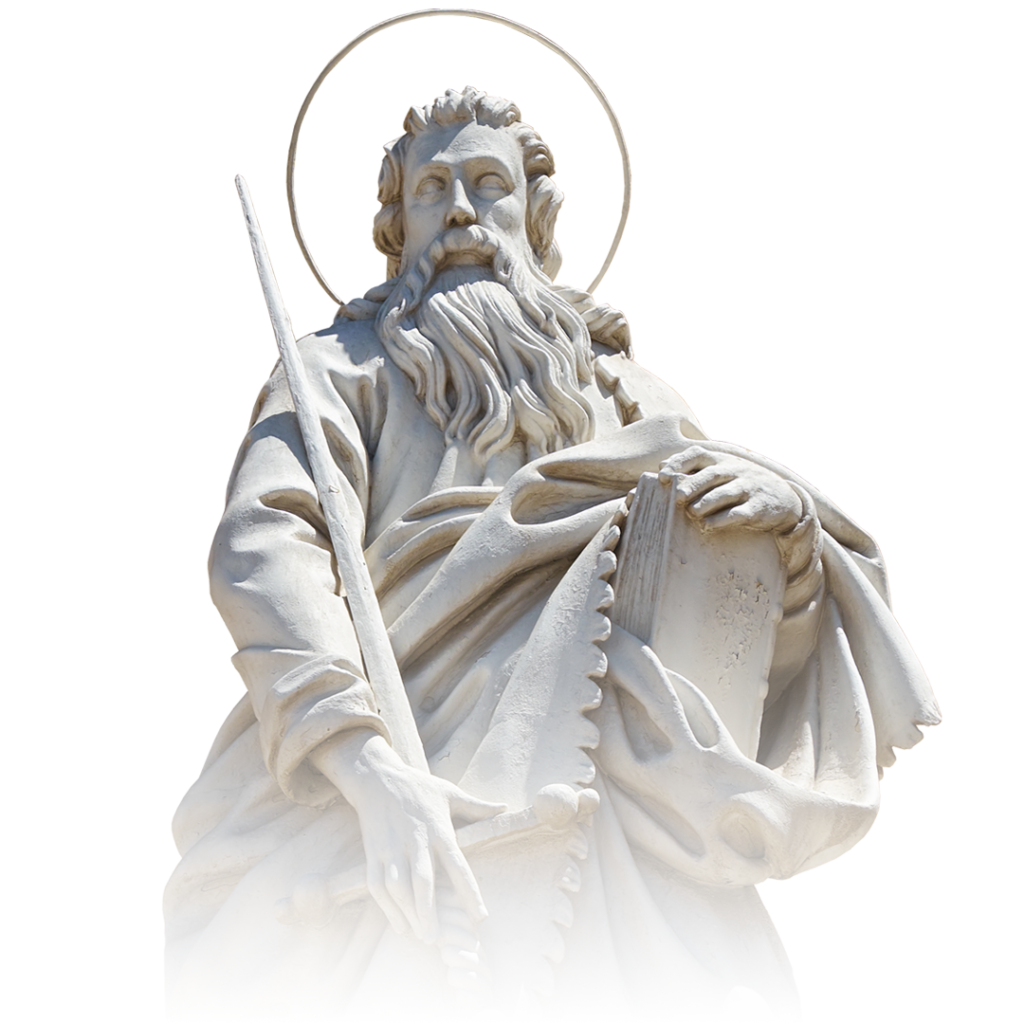
From words to action
As a parallel, based on what the early Church did, we can retrace back some of the teachings of Jesus which they put into practice.
There’s also the fact that the disciples put Jesus’ teachings into practice95
| Christian practices | Jesus’ teachings |
| prayer | |
| Eucharist | |
| preaching | |
| help the poor | |
| healing | |
| exorcism | |
| baptizing |
Testimony should be treated as reliable until proven otherwise. “First, trust the word of others, then doubt if there are good reasons for doing so.” This is general rule for everyday life applies also to the historian in relation to her sources.96
Richard Bauckham
Signs of authenticity
Skeptics can imagine that many sayings of Jesus was invented by the Church for their own purpose. For this reason, scholars came up with many criterion to determine the probability that Jesus actually said what is recorded in the Gospel.
- multiple attestations: if a saying is also present in different independent sources (the more the better)
- Aramaism: if a sentence make better sense in Aramaic rather than Greek, it’s probable that it originated from the Palestinian Church before they translated for a Gentile audience
- embarrassment: if a story self-damage itself
- dissimilarity: if a saying of Jesus is different from the Jewish traditions of his time and also from the early Church that followed him
- coherence: …
- early: a material which is closer to the sources has less chance of distortion / lack of memory with time
Attention span
We don’t remember everything. I don’t know what I ate 1 week ago. Because my brain doesn’t care about it. But I remember 9/11 when I was in elementary school. We tend to remember what affects us. The Jews were impatiently waiting for their Messiah. That hunger of anticipation puts them into an alert mode whenever there will be signs from God.
Emotional shock
Jesus repetitively performs miracles, raise people from the dead, drive out demons, was crucified, resurrected from the dead. That’s not the sort of stuff you would easily forget. When an event triggers an intense emotional sensation, dopamine flows up your brain, and save the information.
People who suffer of PTSD hardly forget a traumatic event.
Recommended books
- Richard Baukham – Jesus and the Eyewitnesses: the Gospel as eyewitness testimony
- Craig S. Keener – Christobiography: memory, history and the reliability of the Gospels
- Craig L. Blomberg – The Historical Reliability of the New Testament
- James D. G. Dunn – The Oral Gospel Tradition
- 2 Thess 2:13, 2 Thess 2:15, 2 Tim 2:2
- Richard A. Burridge, “What are the Gospels? a comparison with Graeco-Roman biography”, (Baylor University Press, 2018), 168-170
- Craig S. Keener, “Christobiography: memory, history, and the reliability of the Gospels”, (Eerdmans Publishing, 2019), 402
- Peter J. Williams, “Can We Trust the Gospels?”, (Crossway, 2018), 100
- E.P. Sanders, “Jesus and Judaism”, (London: SCM Press, 1985), 157-173
- Robert K. McIver, “Memory, Jesus and the Synoptic Gospels”, (Atlanta: Society of Biblical Literature, 2011), 206-208
- J. Warner Wallace, “Cold-Case Christianity: A homicide detective investigates the claims of the Gospels”, (David C. Cook, 2013), 81
- Alan R. Millard, “Reading and Writing in the time of Jesus” (Sheffield Academic Press, 2000), 175-76, 202-4, 227-29
- Birger Gerhardsson, “The Reliability of the Gospel Tradition”, (Grand Rapids, MI: Baker Academic, 2001), 13
- “Against Apion”, 1.49
- J. Ed Komoszewski, M. James Sawyer, Daniel B. Wallace, “Reinventing Jesus: How Contemporary Skeptics Miss The Real Jesus And Mislead Popular Culture”, (Kregel Publications, 2006), 38
- Robert H. Gundry, “The use of the Old Testament in Matthew’s Gospel”, (Leiden: Brill, 1976), 182
- Eusebius, “History of the Church”, 3.39.15
- 1 Pet 5:1, 2 Pet 1:16-17, Jn 21:24, 1 Jn 1:1, Jn 19:35, Acts 2:32, 3:15, 4:18-20, 5:30-32, 10:39-40
- 1 Cor 15:5-8, Mk 16:1, Mt 28:1, Lk 24:10, 1:2, Acts 1:21-22, 2:32, 4:19-20, 10:39-40, Jn 20:1
- Larry W. Hurtado, “Destroyer of the gods: Early Christian Distinctiveness in the Roman World”, (Waco, TX: Baylor University Press, 2016), 115
- Brant Pitre, “The Case for Jesus: the biblical and historical evidence for Christ”, (New York: IMAGE, 2016), 68
- Justin Martyr, “Dialogue with Trypho”, “1 Apology” (chapter 66)
- Augustine of Hippo, “Harmony of the Gospels” (chapter 1, article 1)
- J.P. Moreland, “Scaling the secular city: a defense of Christianity”, (Baker Academic, 1987), 137
- William V. Harris, “Ancient Literacy”, (Harvard University Press, 1989), 328
- Craig L. Blomberg, “The Historical Reliability of the New Testament: Countering the Challenge to Evangelical Christian Beliefs”, (B&H Academic, 2016), 37
- Craig A. Evans, “Jesus and his world: The Archeological Evidence”, (Westminster John Knox Press, 2012), 83-84
- Deut 4:9, 6:7, 11:19, 31:12-13, 2 Chron 17:7-9, Eccles 12:9, 4 Macc 18:10-19
- Philo, “On the Embassy to Gaius”, 210 & Josephus, “Against Apion”, 1.60, 2.204
- Joseph M. Holden & Norman Geisler, “The popular handbook of archeology and the Bible: discoveries that confim the reliability of Scripture”, (Harvest House Publishers, 2013), 21
- Peter J. Williams, “Can We Trust the Gospels?”, (Crossway, 2018), 99
- A. N. Sherwin-White, “Roman Society and Roman Laws in the New Testament”, (Grand Rapids: Baker, 1978),186-193
- Gilbert Garraghan, “A guide to historical method”, (Greenwood Publishing Group, 1974), 259-262
- Marelene Ciklamini, “Old Norse epic and historical tradition”, (Indiana University Press, 1971), 21
- Irenaeus of Lyon, “Letter to Florinus”, quoted in Eusebius, “History of the Church”, 5.20.5-6
- Rom 1:3, Lk 4:16, Mt 2:2, Mt 5:17, Jn 4:26
- Mk 9:5, Mk 11:21, Mt 26:25, Mt 26:49, Jn 1:38, Jn 1:49, Jn 3:2, Jn 4:31, Jn 20:16
- Lk 11:28, Act 4:4, 31; 6:7, 8:14, 25; 10:36-44; 11:1, 12:24; 13:46, 49, 14:3; 15:7, 35; Eph 1:13, Phil 2:16, Col 1:5, 1 Thess 1:6, 2:13, 2 Thess 3:1, Heb 1:7, 4:12, 1 Peter 1:23-25, Rev 1:2, 6:9
- Mt 16:9, Mk 8:18, Jn 15:20; 16:4
- Richard Bauckham, “Jesus and the Eyewitnesses: The Gospels as Eyewitness Testimony”, (Eerdmans, 2017), 249-250
- Mt 10:1-23, Mk 6:7-12, Lk 9:1-10
- Peter J. Williams, “Can We Trust the Gospels?”, (Crossway, 2018), 100
- Craig S. Keener, “Christobiography: memory, history, and the reliability of the Gospels”, (Eerdmans Publishing, 2019), 411
- Paul Barnett, “The Birth of Christianity: The First Twenty Years”, (Grand Rapids: Eerdmans, 2005), 113-14; see also Gerhardsson, “Memory and Manuscript”, 136-56
- Peter J. Williams, “Can We Trust the Gospels?”, (Crossway, 2018), 101
- Peter J. Williams, “Can We Trust the Gospels?”, (Crossway, 2018), 102
- We count a cycle of 3 Passover festivals in the Gospel of John (Jn 2:13, 6:4, 11:55)
- Michael F. Bird, “The Gospel of the Lord: how the early Church wrote the story of Jesus” (Grand Rapids: Eerdmans, 2014), 42
- Mt 4:22, Lk 5:11, Jn 1:35-51
- 5:32/19:9, 5:29-30/18:8-9, 7:15-20/12:33-35, 9:13/12:7, 10:21-22/24:9-10, 12:38-39/16:1-4, 16:19/18:18, 17:20/21:21, 20:26/23:11, 24:5,11/24:23-24, 8:11/13:42/13:50/22:13/24:51/25:30
- 9:35/10:44, 4:12/8:18, 4:9/23, 8:31/9:31/10:33-34
- 7:50/8:48/17:19/18:42, 5:14/17:14, 8:16/11:33, 11:43/20:46, 12:11-12/21:14-15, 8:8/14:35, 8:18/19:26, 9:22/9:43-44/18:31-33
- 4:21/4:23/5:25/5:28/16:2/16:25/16:32, 6:35/6:48/6:51, 10:7/10:9, 10:11/10:14, 14:12/14:28/16:10,16:17/16:28,20:17
- James D. G. Dunn, “Christianity in the Making Volume 2: Beginning from Jerusalem”, (Grand Rapids, MI: Eerdmans, 2009), 213
- Acts 1:22; 2:24-32; 3:15; 4:2, 10, 33; 5:30; 10:40-41; 13:30-37; 17:3, 18, 31-32; 23:6; 24:15, 21; 26:8, 23
- James D. G. Dunn, “Christianity in the Making Volume 2: Beginning from Jerusalem”, (Grand Rapids, MI: Eerdmans, 2009), 189
- Josephus, “Antiquity of the Jews”, 16.2.4 / Philo, “Legatio ad Gaium” 156 / Mk 1:21; 6:2
- C.F.D. Moule, “The Birth of the New Testament”, (London: Adam & Charles Black, 1981), 21
- Lk 24:53, Acts 3:1-3, 5:21-25, 9:20, 13:5; 14-15, 14:1, 17:1, 18:4; 19; 26, 19:8, 21:26-30
- William V. Harris, “Ancient Literacy”, (Harvard University Press, 1989), 328
- Acts 15:31, 1 Thess 5:27, Col 4:16, Rev 1:3
- Justin Martyr, “Apologies I”, 67
- Joseph A. Fitzmyer, “A Christological Catechism: New Testament Answer” (new revised and expanded edition), (New York: Paulist Press, 1991), 18-19
- Richard Bauckham, “Jesus and the God of Israel: God Crucified and Other studies in the New Testament’s Christology of Divine Identity”, (Grand Rapids, MI: Eerdmans, 2008), x, 128-30; cf 30, 195-210
- Raymond E. Brown, “A Crucified Christ in Holy Week: Essays on the Four Gospel Passion Narratives”, (Collegeville, MN: The Liturgical Press, 1986), 9
- G. N. Stanton, “Jesus of Nazareth in New Testament Preaching”, (Cambridge University Press, 1974), 4
- Mk 14:61-64, 1 Cor 8:6, 10:9-10, 16:22, Rom 1:3-4, 10:9-10, Jn 1:1-18, Col 1:15-20, 2:9-15, Phil 2:6-11, 1 Tim 3:16, 1 Peter 3:18-22, Acts 2:27, 2:36-38, 3:14, 3:18-20, 4:10, 5:31, 10:36, 13:23, 13:33-35, Q
- Jn 1:1-18, 1 Tim 3:16, 2 Tim 2:8, Phil 2:6-11, Col 1:15-20, 2:9-15, 1 Jn 4:2
- 1 Cor 15:3, Mk 15:37, Acts 2:23, 4:10, 10:39, Phil 2:6
- 1 Cor 15:3-8, Acts 2:29-32
- Mk 5:41, 7:34, 10:46-52, M, L, Q, Sign source, Acts 2:22, 10:38
- Martin Hengel, “The Four Gospels and the One Gospel of Jesus Christ”, (London: SCM Press, 2000), 86
- Martin Hengel, “Acts and the History of Earliest Christianity”, (Philadelphia: Fortress Press, 1985), 43-44
- Craig S. Keener, “Christobiography: Memory, History, and the Reliability of the Gospels”, (Grand Rapids: Eerdmans, 2019), 91
- Martin Hengel, “Acts and the History of the Earliest Christianity”, (Philadelphia: Fortress Press, 1985), 26
- Bart D. Ehrman, “Jesus, Interrupted: Revealing the Hidden Contradictions in the Bible (and Why We Don’t Know About Them)”, (New York: HarperCollins, 2009), 146
- 1 Clement 5:1-4, Ignatius (Letter to the Smyrneans 3:1-2), Dionysus of Corinth, Muratorian Canon, Tertullian (Scorpiace 15) and The Prescription Against Heresies 36, and less reliable sources: The Apocalypse of Peter, The Ascension of Isaiah, The Act of Peter, The Apocryphon of James
- 1 Clement 5:5-7, Ignatius (Letter to the Ephesians 12:2), Polycarp (Letter to the Philippians 9:1-2), Dionysus of Corinth (Eusebius, “Church History”, 2.25.4), Irenaeus (Against Heresies 3.1.1), Tertullian (Scorpiace 15:5-6) and the less reliable Acts of Paul
- Josephus (Antiquities of the Jews, 20.197-203), Hegesippus (Eusebius, “Church History”, 2.23.8-18), Clement of Alexandria (Hypotyposes, 7), and the less reliable First Apocalypse of James
- E. P. Sanders & Margaret Davies, “Studying the Synoptic Gospels”, (Trinity Press International, 1989), 117
- Martin Hengel, “Acts and the History of the Earliest Christianity”, (Philadelphia: Fortress Press, 1985), 11
- Craig S. Keener, “Christobiography: Memory, History, and the Reliability of the Gospels”, (Grand Rapids: Eerdmans, 2019), 182
- Papias, quoted by Eusebius, “History of the Church”, 3.39
- Lk 11:28, Act 4:4, 31; 6:7, 8:14, 25; 10:36-44; 11:1, 12:24; 13:46, 49, 14:3; 15:7, 35; Eph 1:13, Phil 2:16, Col 1:5, 1 Thess 1:6, 2:13, 2 Thess 3:1, Heb 1:7, 4:12, 1 Peter 1:23-25, Rev 1:2, 6:9
- Paul Rhodes Eddy & Gregory A. Boyd, “The Jesus legend: a case for the historical reliability of the Synoptic Jesus tradition”, (Baker Academic, 2007), 226-228
- Craig S. Keener, “Christobiography: memory, history, and the reliability of the Gospels”, (Eerdmans Publishing, 2019), 7
- Thucydides, “History of the Peloponnesian War”, 1.22.1
- John P. Meier, “A Marginal Jew”, 1.43
- Joseph Ratzinger, “Jesus of Nazareth: From the Baptism in the Jordan to the Transfiguration”, (New York: Doubleday, 2007), 228
- Mark A. Chancey, “Greco-Roman Culture and the Galilee of Jesus”, (Cambridge University Press, 2005), 5
- Gerd Theissen, “The New Testament”, (London: T&T Clark, 2003), 38
- Peter J. Williams, “Can We Trust the Gospels?”, (Wheaton, IL: Crossway, 2018), 97
- Thucydides, “Peloponnesian War”, 2.35-46
- Josephus, “Jewish War”, 7.323-36, 341-88
- 1 Cor 2, Mt 15:2, Mk 7:5
- 1 Thess 2:13, 2 Tim 3:16
- Richard Bauckham, “Jesus and the Eyewitnesses: The Gospels as Eyewitness Testimony”, (Cambridge: Eerdmans Publishing, 2006), 270
- Papias, quoted by Eusebius, “History of the Church”, 3.39
- Mt 28:18-20, Acts 2:42
- Richard Bauckham, “Jesus and the Eyewitnesses: The Gospels as Eyewitness Testimony”, (Grand Rapids: Eerdmans, 2006), 487